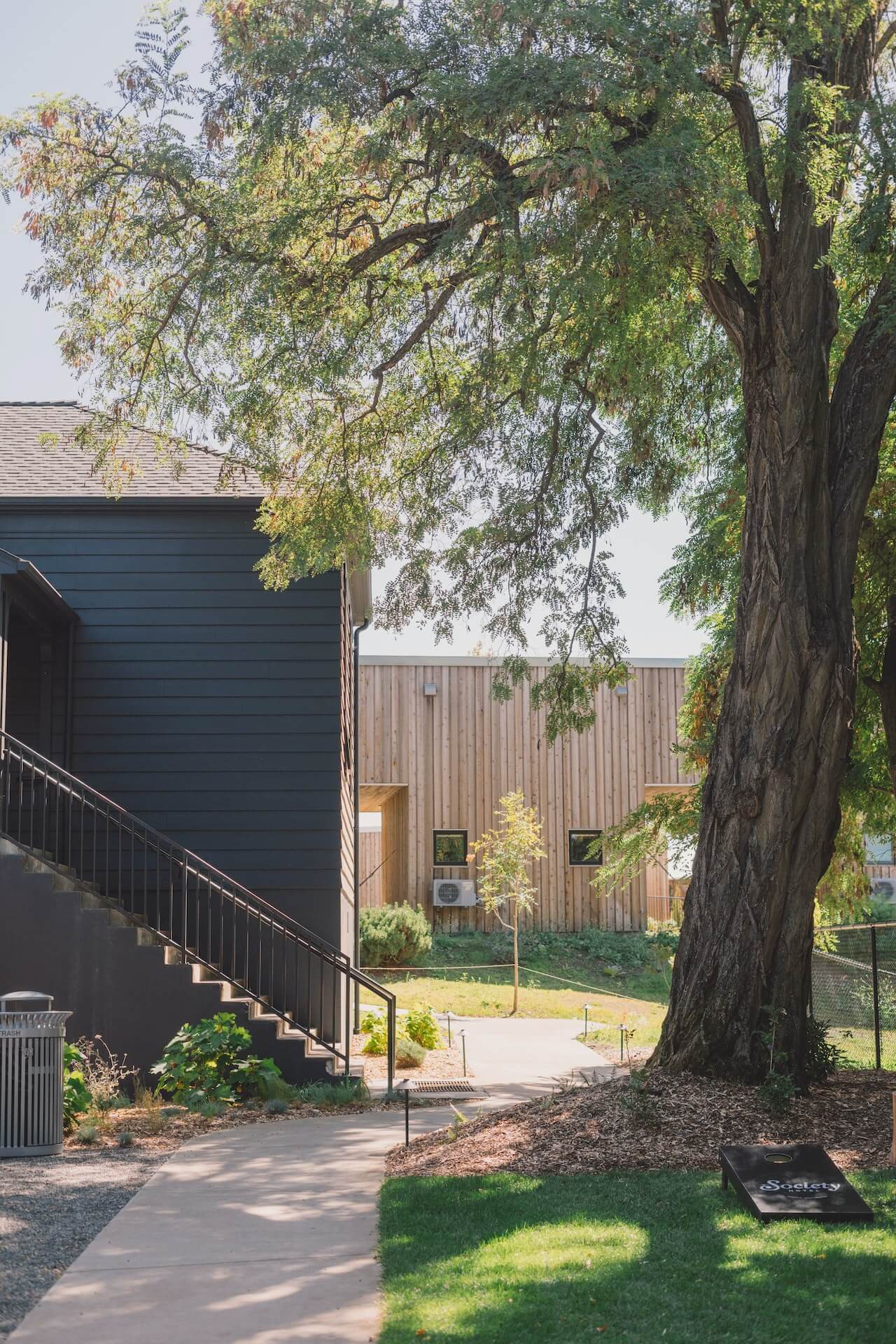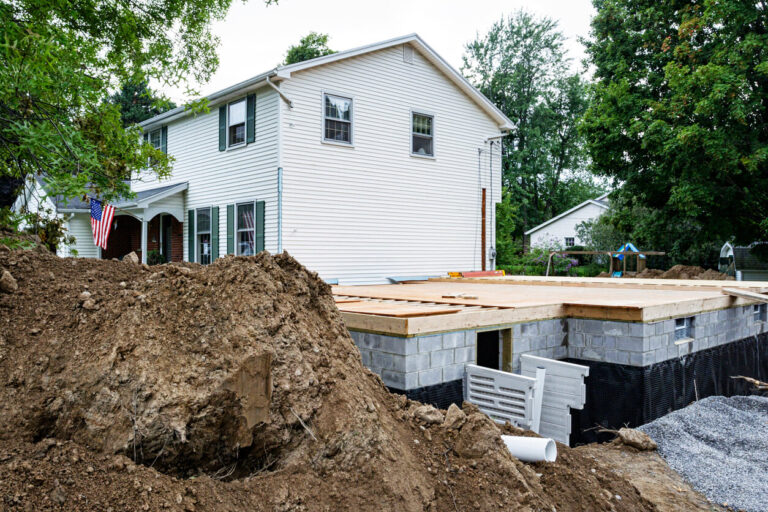How trees can affect your homes foundation
Growing trees can be a beautiful addition to your property, adding shade, beauty, and a connection to nature. However, what many homeowners fail to realize is the potential danger that trees pose to their home’s foundation. The roots of trees can extend deep into the ground, seeking water and nutrients, and over time, they can begin to infiltrate and damage your foundation. This can lead to costly repairs and even structural instability if left untreated. In this article, we will explore the hidden dangers of trees and how they can impact your home’s foundation. We will discuss the signs to look out for, the potential risks, and the steps you can take to mitigate these issues. By understanding the impact that trees can have on your foundation, you can make informed decisions about landscaping and protect the structural integrity of your home. Stay tuned to learn more about this important topic.
Understanding the root system of trees
To truly understand how trees can impact your home’s foundation, it’s important to first understand the root system of trees. Trees have a complex network of roots that serve several purposes, including anchoring the tree, absorbing water and nutrients, and storing energy. The root system typically consists of two main types of roots: deep roots and shallow roots.
Deep roots are responsible for anchoring the tree and providing stability, while shallow roots are responsible for absorbing water and nutrients from the topsoil. While deep roots can extend several feet into the ground, shallow roots are more concentrated near the surface, spreading out horizontally.
When it comes to the impact on your home’s foundation, it’s the shallow roots that are of concern. As these roots grow and spread, they can infiltrate the soil around your foundation, causing it to shift and become unstable. This can lead to cracks in the foundation, uneven settling of the structure, and even structural damage over time.
It’s important to note that not all trees have the same root system, and some are more invasive than others. Understanding the types of trees that pose the highest risk to your foundation can help you make informed decisions about landscaping and tree placement around your home.
Common signs of tree-related foundation damage
Now that we have a basic understanding of how tree roots can impact your home’s foundation, let’s explore some common signs of tree-related foundation damage. While some signs may be obvious, others can be more subtle and easily overlooked. Being aware of these signs can help you identify potential issues early on and take appropriate action.
One of the most common signs of tree-related foundation damage is the presence of cracks in your foundation walls or floors. These cracks can be small and barely noticeable, or they can be larger and more severe. Cracks may appear vertically, horizontally, or in a stair-step pattern, and they may be wider at one end than the other. It’s important to monitor any cracks in your foundation and consult with a professional if you notice any changes or progression.
Another sign of tree-related foundation damage is uneven settling of your home. You may notice that certain areas of your home are sinking or sloping, which can indicate that the foundation is shifting due to tree root infiltration. This can lead to doors and windows that no longer close properly, floors that are uneven or sagging, and gaps between walls and ceilings.
In addition to cracks and uneven settling, you may also notice moisture issues in your basement or crawl space. Tree roots can disrupt drainage systems and cause water to seep into your home, leading to dampness, mold, and other water-related problems. If you notice a musty smell, visible water stains, or an increase in humidity, it’s important to investigate the source and address any tree-related issues.
By being aware of these common signs of tree-related foundation damage, you can take proactive measures to protect your home and prevent further damage.
Types of trees that pose the highest risk to foundations
While all trees have the potential to impact your home’s foundation, certain types of trees are more likely to cause problems than others. This is due to their root system, growth patterns, and overall size. By understanding which trees pose the highest risk, you can make informed decisions about tree placement and landscaping around your home.
One type of tree that poses a high risk to foundations is the silver maple tree. Silver maples have an extensive root system that spreads out horizontally near the surface, making them more likely to infiltrate and damage your foundation. Their aggressive root growth can cause significant problems, including cracks, uneven settling, and water infiltration.
Another tree to be cautious of is the willow tree. Willow trees have shallow, aggressive roots that seek out water and can easily infiltrate the soil around your foundation. Their root growth can put pressure on your foundation walls and cause them to crack or bow. Additionally, willow trees have a high water demand and can dry out the soil around your foundation, causing it to shrink and settle unevenly.
Other trees that pose a high risk to foundations include poplar trees, oak trees, and cottonwood trees. These trees have extensive root systems that can spread out horizontally and infiltrate the soil around your foundation. If you have any of these trees near your home, it’s important to monitor them closely and take appropriate action to protect your foundation.
Preventive measures to protect your home’s foundation
Now that we have explored the potential risks and signs of tree-related foundation damage, let’s discuss some preventive measures you can take to protect your home’s foundation. By implementing these measures, you can reduce the likelihood of tree-related issues and maintain the structural integrity of your home.
One of the most effective preventive measures is to create a root barrier around your foundation. A root barrier is a physical barrier that prevents tree roots from infiltrating the soil near your foundation. This can be achieved by installing a barrier made of plastic or metal at a depth of at least 3 feet around your foundation. The barrier should extend vertically as well to prevent roots from growing under it.
Another preventive measure is to choose tree species that have less invasive root systems. When selecting trees for your property, consider species such as dogwood, redbud, or cherry trees, which have less aggressive root growth. These trees are less likely to cause damage to your foundation while still providing shade and beauty.
Proper tree maintenance is also essential in preventing tree-related foundation damage. Regularly inspect your trees for any signs of disease or decay, as weakened trees are more likely to have root issues. Prune tree branches that are close to your home, as they can cause physical damage to your roof or siding during storms. Additionally, ensure that your trees are properly watered, as overwatering or underwatering can lead to root problems and instability.
Tree removal or relocation options
In some cases, preventive measures may not be enough, and you may need to consider tree removal or relocation to protect your foundation. If you have a tree that poses a high risk to your foundation and preventive measures are not feasible, it may be necessary to remove the tree entirely.
Tree removal should always be carried out by a professional arborist to ensure safety and minimize damage to your property. A professional arborist will have the expertise and equipment to safely remove the tree and its root system without causing further harm to your foundation. They will also be able to advise you on the best course of action for tree replacement or alternative landscaping options.
If you are hesitant to remove a tree, another option to consider is tree relocation. Tree relocation involves carefully digging up the tree and transplanting it to another location on your property or even to a different property. This can be a more costly option and may not be feasible for all trees, but it can allow you to preserve the tree while still protecting your foundation.
Before making any decisions regarding tree removal or relocation, it’s important to consult with a professional arborist who can assess the tree and its impact on your foundation. They can provide expert advice and guide you through the process to ensure the best outcome for your home and the tree.
Hiring a professional arborist for tree assessment and maintenance
Maintaining healthy trees around your home is crucial in protecting your foundation. To ensure proper tree assessment and maintenance, it’s advisable to hire a professional arborist. A professional arborist specializes in the care and maintenance of trees and can provide valuable insight into the health and safety of your trees.
When hiring a professional arborist, it’s important to look for certifications and qualifications. A certified arborist has undergone training and demonstrated knowledge and expertise in tree care. They will be able to assess the health and stability of your trees, identify any potential risks, and recommend appropriate maintenance or removal options.
A professional arborist can also provide regular tree maintenance services, such as pruning, fertilizing, and pest control. By keeping your trees in good health, you can minimize the risk of root issues and protect your foundation.
When selecting a professional arborist, be sure to ask for references and check online reviews or testimonials. It’s also a good idea to get multiple quotes and compare services and prices. By hiring a reputable professional arborist, you can have peace of mind knowing that your trees are in good hands.
Foundation repair options for tree-related damage
If you have already experienced tree-related foundation damage, it’s important to address the issue promptly to prevent further deterioration. There are several options available for repairing foundation damage caused by tree roots, depending on the severity of the damage and the specific circumstances.
One common method of foundation repair is underpinning. Underpinning involves strengthening and stabilizing the foundation by adding additional support. This can be achieved by installing steel piers or helical piers deep into the ground to reach stable soil layers. These piers provide support and prevent further settling or shifting of the foundation.
Another option for foundation repair is hydraulic jacking. Hydraulic jacking involves lifting the foundation to its original position using hydraulic jacks and then stabilizing it with piers or other support systems. This method can be effective for correcting uneven settling and restoring the integrity of the foundation.
In some cases, it may be necessary to repair or replace damaged sections of the foundation. This can involve excavating around the affected area, reinforcing the foundation with steel or concrete, and then backfilling and compacting the soil. This method is typically more invasive and costly but may be necessary for severe foundation damage.
It’s important to consult with a professional foundation repair specialist to assess the extent of the damage and recommend the most appropriate repair method for your specific situation. They will be able to provide a detailed analysis and cost estimate for the necessary repairs.
Insurance considerations for tree-related foundation issues
When it comes to tree-related foundation issues, insurance coverage can vary depending on your policy and the specific circumstances. It’s important to review your homeowners insurance policy to understand what is covered and what is not.
In general, most homeowners insurance policies do not cover tree-related foundation damage caused by gradual soil movement or root infiltration. These issues are typically considered maintenance-related and are the responsibility of the homeowner.
However, if your foundation is damaged by a falling tree or a sudden, unexpected event, such as a storm or a vehicle collision, it may be covered under your homeowners insurance policy. It’s important to document the damage, take photographs, and contact your insurance provider as soon as possible to initiate the claims process.
To ensure that you have adequate coverage for tree-related foundation issues, it’s advisable to review your homeowners insurance policy with your insurance agent. They can provide guidance on coverage options and help you understand the terms and conditions of your policy.
Conclusion and final thoughts on maintaining a healthy foundation around trees
In conclusion, trees can be a beautiful and valuable addition to your property, but they can also pose hidden dangers to your home’s foundation. The root system of trees, particularly shallow roots, can infiltrate and damage your foundation over time, leading to costly repairs and structural instability.
By understanding the root system of trees, recognizing the signs of tree-related foundation damage, and taking preventive measures, you can protect your home’s foundation and maintain its structural integrity. Choosing tree species with less invasive root systems, creating root barriers, and implementing proper tree maintenance are all effective ways to reduce the risk of tree-related issues.
In some cases, tree removal or relocation may be necessary to protect your foundation. It’s important to consult with a professional arborist who can assess the tree and provide expert advice on the best course of action.
If you have already experienced tree-related foundation damage, prompt repair is essential to prevent further deterioration. There are several options available for foundation repair, including underpinning, hydraulic jacking, and repairing or replacing damaged sections of the foundation. Consulting with a professional foundation repair specialist is crucial in determining the most appropriate repair method for your specific situation.
Finally, it’s important to review your homeowners insurance policy to understand what is covered and what is not in regards to tree-related foundation issues. By having a clear understanding of your coverage, you can ensure that you are adequately protected.
In conclusion, maintaining a healthy foundation around trees requires awareness, proactive measures, and professional guidance. By taking these steps, you can enjoy the beauty of trees while protecting your home for years to come.







